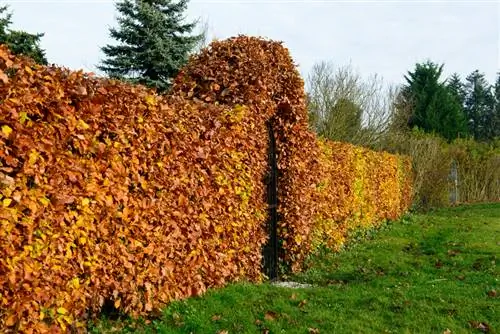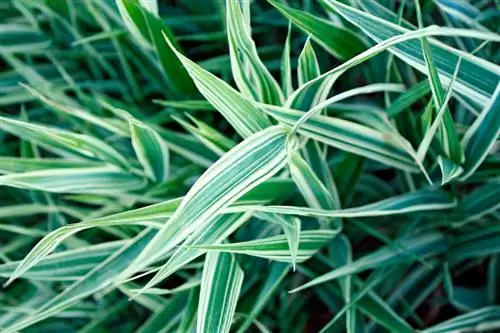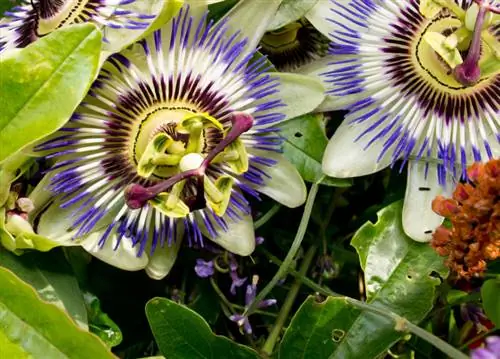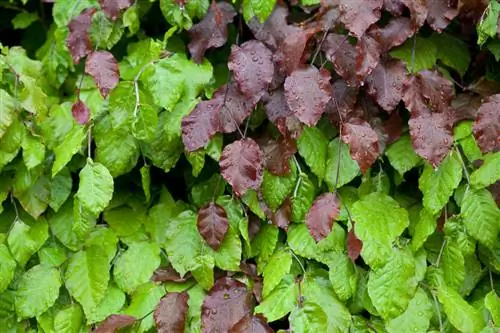- Author admin [email protected].
- Public 2023-12-16 16:46.
- Last modified 2025-01-23 11:20.
Beech trees need nutrient-rich soil. In order for the beech hedge to grow well, it must be fertilized regularly, at least in the first few years. What you can fertilize the beech hedge with and what you need to pay attention to.
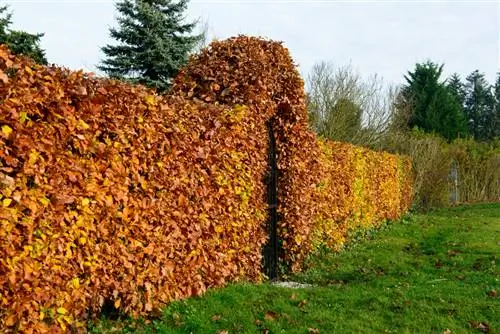
How should you properly fertilize a beech hedge?
To effectively fertilize a beech hedge, use compost, horn shavings or lawn clippings during the growth phase from March to June. Older beech hedges usually do not need fertilizer unless the soil is very sandy. Make sure to keep the soil pH neutral and not to over-fertilize.
Good soil preparation saves fertilizing
When planting a beech hedge, prepare the soil carefully. Mix in plenty of ripe compost and/or horn shavings so that the young beech trees are well supplied.
Additional fertilizer applications are not necessary in the first few months. The trees first have to form roots to supply themselves with nutrients.
You should provide the beech hedge with additional fertilizer from the second year at the latest.
Suitable fertilizers for beech hedges
- Compost
- Horn shavings
- Lawn cuttings (without flowers!)
- Leaves
- Fertilizer for beech hedges
- Long-term fertilizer
Compost is the best fertilizer you can give your beech hedge. The organic material releases nutrients only slowly, so over-fertilization is avoided. The compost is just spread and raked in very lightly.
If you want to use an organic-mineral beech fertilizer, you should find out about the quality of the soil beforehand. Take a soil sample and have it tested in the laboratory. It's not very expensive and will save you a lot of trouble later.
Beech hedges quickly run the risk of over-fertilization. It is better to use less fertilizer than specified. Under no circumstances should artificial fertilizer get on the leaves as this will cause them to burn.
When is fertilization carried out?
You only fertilize beech hedges during the growth phase. It starts in March and lasts until June. During this time you should either fertilize the hedge regularly or give it a slow-release fertilizer for beech hedges in March.
After the growth phase, the beech hedge may no longer be fertilized. If fertilizer is applied too late, the beech trees will sprout again. However, the shoots are not mature until winter, so they freeze and damage the plant as a whole.
Just leave the leaves there
A very simple way to fertilize the beech hedge also saves you a lot of work. Just leave the fallen leaves lying around in autumn.
Over the winter it provides good protection against frost and prevents the soil from drying out. It later decomposes and releases nutrients that automatically fertilize the beech hedge.
However, you can only leave leaves lying around that are really he althy. You must carefully remove leaves that are affected by fungal diseases or pests. Otherwise, fungi and lice will spread again next year.
Older beech hedges do not need fertilizer
If the beech hedge grows for several years, fertilizing becomes unnecessary. Only if the soil is very sandy does the hedge need occasional fertilizer.
Tip
Beech trees prefer soil that is not too acidic. You can improve acidic soils by adding lime. Follow the instructions on the package exactly to avoid damage to the beeches.

